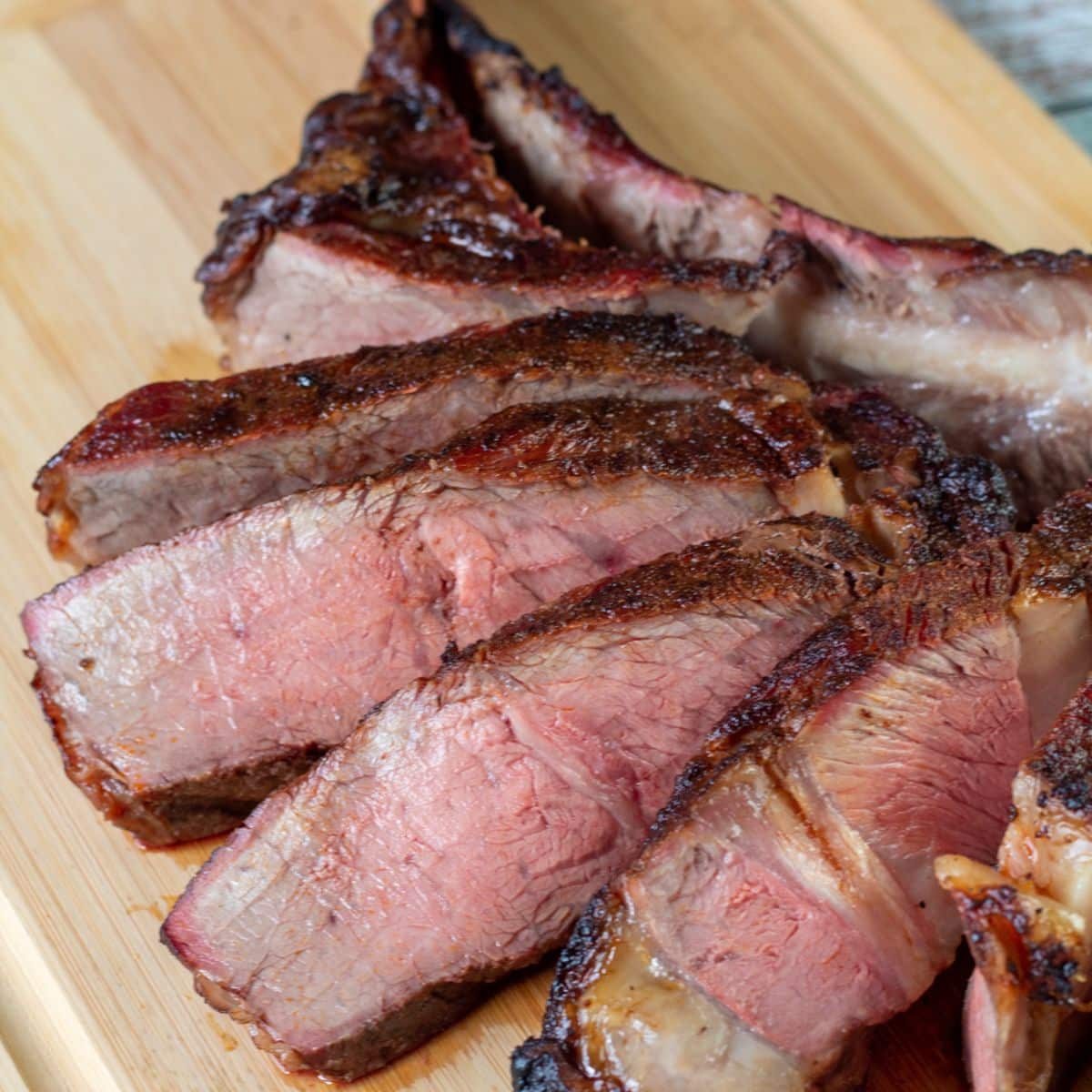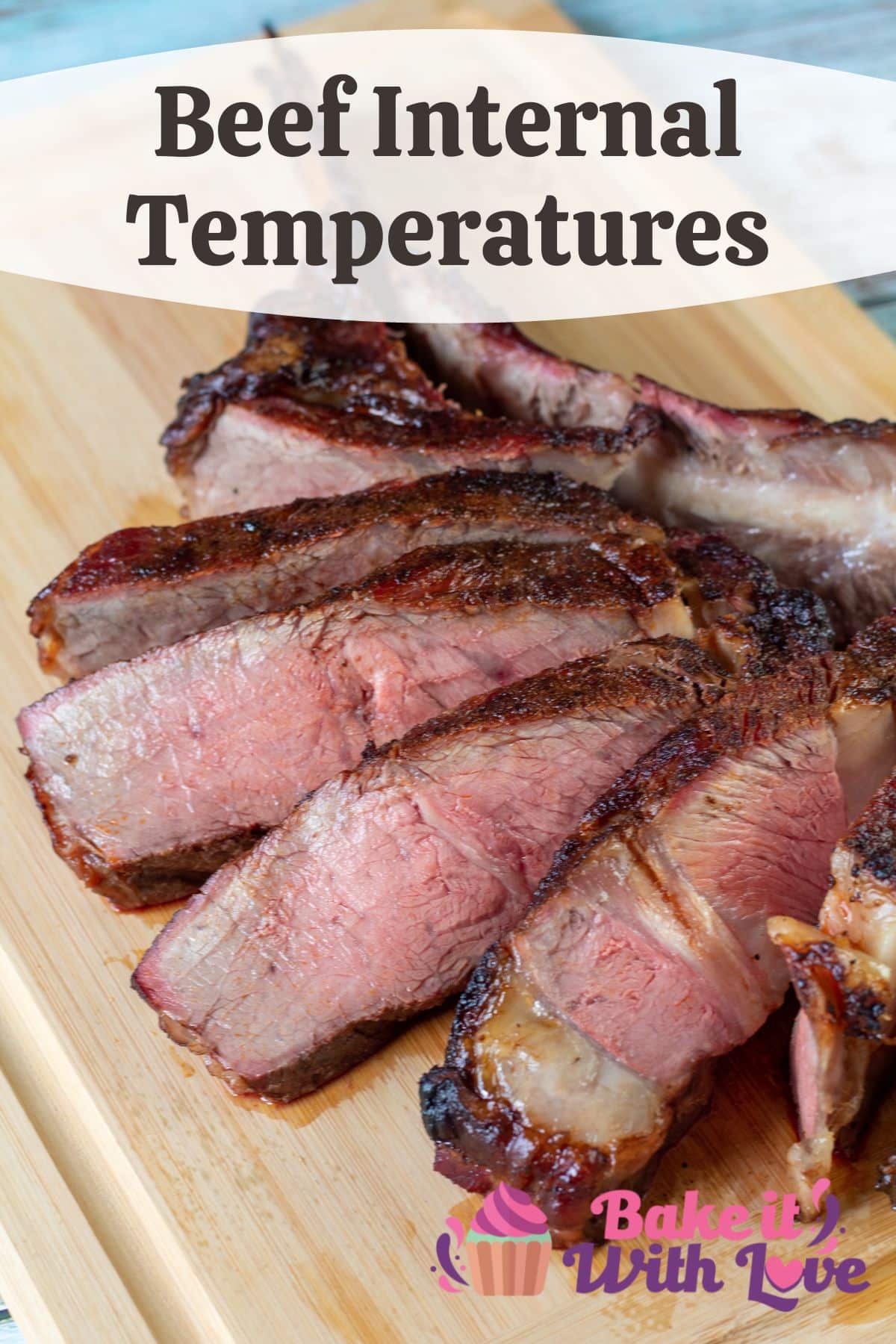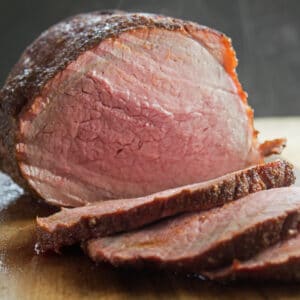You can always cook the ideal steakhouse steak, burger, or prime rib by following the instructions on our practical beef, burger, and steak temperature chart.
We love our steaks, burgers, prime ribs, and roasts. The most frequent inquiry we receive is, “How do I cook the perfect steak,” and if that isn’t the case, we are asked what the ideal temperature is for prime rib and hamburgers.
Steak temperatures vary depending on how well-done you like them. We have an easy steak temperature chart. Regardless of the cut you prefer, it enables you to prepare the ideal steakhouse steak. When checking the temperature of beef, be sure to use a meat thermometer.
Ideal Beef Internal Temperatures
Beef – it’s what’s for dinner. We all recall the campaign that restored beef to American families’ dinner tables. However, none of us required persuasion because beef has always been a delicious and adaptable main course in our homes.
But unlike many types of meat that have a fixed internal temperature, beef has a range of temperatures. Because of this, even if you have always known exactly what temperature to cook a pot roast or a prime rib at, you might not be as familiar with the other internal beef temperatures.

Internal Temperatures for Beef Roast or Steak
Beef should be cooked to an internal temperature of 145°F (63°C), according to the USDA. At this temperature, the USDA guarantees that any potential bacteria have been killed by the heat.
Although this is the suggested internal temperature, there are other temperatures you can use as a general guide. To prepare a steak or roast medium-well, the internal temperature must reach 145°F (63°C). A piece of beef cooked to medium-well has a faint pink center and a brown exterior. This is a bit too done for many people.
The majority of people like their beef medium or even medium-rare. Most chefs concur that a quality cut of meat can be safely eaten medium or medium-rare, despite the USDA’s recommendation that no beef be eaten below 145°F (63°C). This, however, only applies to beef cuts that have undergone minimal processing, such as steak, prime rib, or roast.
Here is a quick guide on how to quickly cook a piece of beef to your preferred temperature.
- Rare: 115 to 120°F (46-49°C)
- Medium-Rare: 120 to 125°F (49-52°C)
- Medium: 130 to 135°F (54-57°C)
- Medium-Well: 140 to 145°F (60-63°C)
- Well-Done: 150 to 155°F (66-68°C)
Internal Temperatures for Ground Beef
For steaks and other whole cuts of beef, there is some leeway around the recommended internal temperature of 145°F (63°C), but there is none for ground beef. In fact, the recommended internal temperature for ground beef is higher than that of a well-done steak.
The recommended internal temperature for ground beef is 160°F (71°C). The method used to produce ground beef is the basis for this recommendation. The beef is more likely to become contaminated with bacteria if it is ground. eating undercooked ground beef therefore increases the risk of contracting a foodborne illness
Therefore, to ensure that ground beef is safe to eat, it must always be cooked to 160°F (71°C).
How to Measure the Internal Temperature of Beef
Using a meat thermometer is the most precise method for determining the internal temperature of any type of meat. Using a thermometer to check the internal temperature of a turkey for Thanksgiving or a prime rib for Easter is something that many of us are accustomed to doing. These types of meat are for a celebration, so we take extra care to check the temperature to ensure that the meat is perfectly cooked.
For the holidays, having a perfectly cooked bird or roast is crucial for flavor, but it’s also crucial for safety. Typically, we use the meat thermometer to ensure that the meat has been cooked to the proper temperature for our guests’ safety.
Every time you cook beef (or any other meat), you should pay attention to checking the internal temperature with a thermometer. A meat thermometer is the only way to be certain that the internal temperature of a juicy steak or delectable hamburger has been reached.
How to Get the Most Accurate Internal Temperature
The first step is to always insert the meat thermometer into the thickest part of the meat in order to achieve the ideal degree of doneness for a piece of beef. The thickest part is the last to cook. Therefore, it will give you the most accurate temperature.
Allow the thermometer to rest for approximately 30 seconds after inserting it. This allows the thermometer to accurately read the temperature. To obtain a second reading when testing larger cuts of meat, slowly pull the thermometer back 14 inch. This will enable you to determine whether the meat has been cooked throughly.
What Temperature to Look for on the Thermometer
I provided the final internal temperatures you requested above for each level of desired doneness. However, because you want to give the beef time to rest after cooking in the heat, the temperature you are looking for on the thermometer will be lower than the advised temperature.
So, if you want a traditional medium-well steak, which should be cooked to 145°F (63°C), you should only cook it until the thermometer reads 140°F (60°C).
temperatures inside the beef at which it should be removed from the heat
- Rare: 115°F (46°C)
- Medium-Rare: 120°F (49°C)
- Medium: 130°F (54°C)
- Medium-Well: 140°F (60°C)
- Well-Done: 150°F (66°C)
- Ground Beef: 155°F (68°C)
Take your beef off the heat when it reaches five degrees below the suggested temperature. The meat should rest and continue to cook internally by performing the subsequent steps.
How to Let the Meat Rest
After being taken off the heat, beef will continue to cook internally. Therefore, it’s crucial to remove the meat from the oven (or off the stove or grill) a little bit early to prevent overcooking it.
Cover the beef with tin foil after removing it from the heat. This will help it continue to cook by retaining heat inside. Burgers and steaks should be taken off the grill or pan after cooking and placed on a plate. Cover with foil. Larger meat portions, such as a roast, can be kept in the pan. Place a foil tent over the roast.
The size of the cut determines how long you should let the meat rest. A roast can rest for 20-30 minutes. A steak or hamburger, however, might only require 10-15 minutes before serving.

How to Measure the Internal Temperature of Ground Beef
A meat thermometer can be used to easily make hamburgers if ground beef is used. Simply follow the directions above. However, you won’t be able to use a thermometer if you are preparing the ground beef in a skillet for something like spaghetti sauce.
Here, it’s crucial to thoroughly stir and cook the ground beef until each piece is browned. To determine whether the meat is cooked, make sure to do this before adding any seasonings or sauce.
Make sure the ground beef is thoroughly cooked in a skillet before adding it to a casserole to bake.
Measure each piece of beef to determine its internal temperature before cooking it, whether you’re making a big roast, a single steak, or a ton of burgers. This will guarantee that everything turns out well and is safe to consume.
Beef Internal Temperatures Reference Chart
| Level of Doneness | Internal Temperature | Internal Description |
|---|---|---|
| Extra-Rare or Blue-Rare (bleu) | 80-100°F (26-38°C) | Not warm internally with a deep red color. |
| Rare | 115°F (46°C) | The very center is bright red, turning more pink in color toward the exterior. It should be slightly warm throughout. |
| Medium-Rare | 120-125°F (49-52°C) | A bright pink center that turns brown as it reaches the exterior. It should be slightly hot. |
| Medium | 130-135°F (54-57°C) | A light pink center with brown exterior and hot throughout. |
| Medium-Well | 140-145°F (60-63°C) | Mostly grey/brown throughout with a thin strip of pink in the center. Hot all the way through. |
| Well-Done | 150-155°F+ (66-68°C+) | The steak is grey/brown and hot throughout. |
| Brisket | 165-175°F (74-79°C) | Brisket is ready when it pulls apart easily. |
| Pot Roast | 180°F (82°C) | Pot roast is ready when it is fork tender and pulls apart easily. |
| Ground Meat (Patties, Meatloaf, Meatballs, etc.) | 160-165°F (71-74°C) | Use a meat thermometer horizontally to check the internal temperature of ground beef. |
Tell us which of our delicious beef recipes you plan to try by leaving a comment below! These beef internal temperatures are the key to making perfectly cooked beef that is safe to eat!
Please give a recipe you’ve tried a 5-star rating in the box below and/or a review in the comments section further down the page if you enjoyed it. Join the conversation on social media by following me on Pinterest, Facebook, Instagram, or Twitter, sign up for the newsletter (no spam, I promise), and don’t forget to tag me when you try one of my recipes.

Beef Internal Temperatures: Smoked Beef Roast (+ Ideal Internal Temps For More Beef Recipes)
- 4 lbs Eye of Round (or substitute a different lean beef cut like Bottom Round or Top Round that is suitable for roasting).
- 2 tablespoons extra virgin olive oil, or Worcestershire sauce
- ▢ 1 tablespoon sea salt
- ▢ 1 teaspoon black pepper
- ▢ 1 tablespoon paprika
- ▢ 1 teaspoon garlic powder
- ▢ 1 teaspoon onion powder
- Apply Worcestershire sauce or olive oil to the cut of beef roast.
- Combine the seasoning ingredients, which include salt, pepper, paprika, garlic powder, and onion powder, in a small bowl or a plastic storage bag. Apply the seasoning to your beef, rubbing it into the meat as you go. *Let the meat warm up to room temperature, ideally for at least an hour, before smoking it.
- Fill the pellet hopper or chip basket with the wood chips of your choice. Preheat your smoker to 225 degrees F (107 degrees C).
- Place the seasoned beef in the smoker that has been preheated on the grill. If you have a meat probe, place it in the center of the roast to check the internal temperature. *See notes for proper placement of meat probe.
- Smoke for about two hours at 225 degrees Fahrenheit (107 degrees C), or thirty minutes per pound. For RARE, 125-135 degrees Fahrenheit (54-57 degrees Celsius), and MEDIUM RARE, 135-140 degrees Fahrenheit (57-60 degrees Celsius), respectively, should be the internal temperature.
- The smoked beef roast should be removed from the smoker and allowed to rest for about 30 minutes.
- Remove the foil after resting, cut the meat against the grain, and serve.
Equipment You May Need
Smoking a roast beef -internal temperature check
FAQ
What should the internal temp of a chuck roast be?
For tender beef, the internal meat temperature must be at least 195°F/90°C. Chuck roast preparation: Lightly season the roast with salt and pepper on all sides. Put the chuck roast, onions, bay leaves, and rosemary in a sizable bowl or plastic bag.
What is the internal temperature for medium rare roast beef?
After 15 to 20 minutes of resting time, a final internal temperature of 145°F will be reached for Medium Rare doneness. After 15 to 20 minutes of resting time, a final internal temperature of 160°F will be reached for medium doneness.
